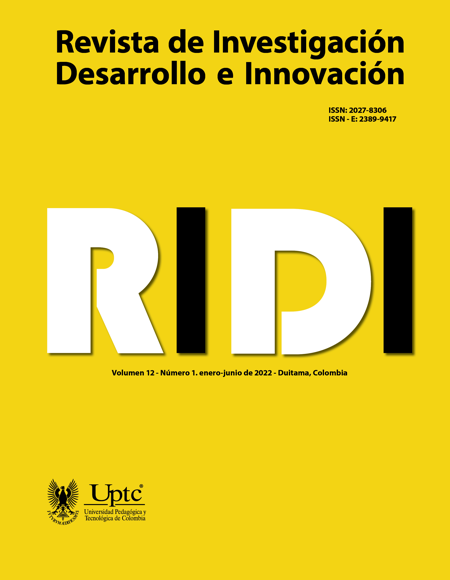Characterization of Beliefs and Imaginaries of University Students on the Assessment in Mathematics

Abstract
This article shows the characterization of the beliefs and imaginaries built by the university students of the B. Sc. in Mathematics teaching training program about evaluation. This is done based on the systematic qualitative analysis of the subjects' discourse, which was obtained through two interviews and two surveys carried out throughout an academic semester. The beliefs were categorized into three groups: the quantification of knowledge, the communication of the teacher and the didactics of the evaluation. In addition, the imaginary that students build about this process became tangible through a graphic representation generated from the systematic analysis developed. For students, this process is integrated into their educational process, it is presented in a clear and concise way, used to quantify their performance while feeding back their development, which lacks didactic characteristics and represents challenges, anxieties, uncertainties and confusion.
Keywords
assessment, mathematics education, beliefs, imaginaries
Author Biography
Mauricio Penagos
Licenciado en Matemáticas y Física, Doctor en Educación Matemática
Elkin Alejandro Osorio-Amaya
Licenciado en Matemáticas, Maestro en Enseñanza de las Matemáticas,
Lina Fernanda Morales-Romero
Licenciada en Educación Básica con Énfasis en Matemáticas, Maestra en Educación
References
- Acharya, B. R. (2017). Factors affecting difficulties in learning mathematics by mathematics learners. International Journal of Elementary Education, 6 (2), 8-15. https://doi.org/10.11648/j.ijeedu.20170602.11 DOI: https://doi.org/10.11648/j.ijeedu.20170602.11
- Araujo, Z. (2017). Connections between secondary mathematics teachers’ beliefs and their selection of tasks for English language learners. Curriculum Inquiry, 47 (4), 363-389. https://doi.org/10.1080/03626784.2017.1368351 DOI: https://doi.org/10.1080/03626784.2017.1368351
- Artigue, M., Bosch, M., Chaachoua, H., Chellougui, F., Chesnais, A., Durand-Guerrier, V., ... & Trouche, L. (2019). The French didactic tradition in mathematics. European traditions in didactics of mathematics, 11-56. Springer, Cham. https://doi.org/10.1007/978-3-030-05514-1_2 DOI: https://doi.org/10.1007/978-3-030-05514-1_2
- Berger, S., Verschoor, A. J., Eggen, T. J., & Moser, U. (2019). Development and validation of a vertical scale for formative assessment in mathematics. Frontiers in Education, 4 (103), 1-20. https://doi.org/10.3389/feduc.2019.00103 DOI: https://doi.org/10.3389/feduc.2019.00103
- Berger, P. L., & Luckmann, T., (1968). La construcción social de la realidad. Buenos Aires: Amorrortu.
- Camargo, B. V., & Justo, A. M. (2013). IRAMUTEQ: um software gratuito para análise de dados textuais. Temas em Psicologia, 21 (2), 513-518. http://doi.org/10.9788/TP2013.2-16 DOI: https://doi.org/10.9788/TP2013.2-16
- Camargo, B. V., & Justo, A. M. (2016). Tutorial para uso do software de análise textual IRAMUTEQ. Laboratório de Psicologia Social da Comunicação e Cognição - UFSC - Brasil: Universidade Federal de Santa Catarina.
- Carrasco, L., & Sánchez, M. (2016). Factores que favorecen la elección de las matemáticas como profesión entre mujeres estudiantes de la Universidad Veracruzana. Perfiles Educativos, 38 (151), 123 - 138. https://doi.org/10.22201/iisue.24486167e.2016.151.54919 DOI: https://doi.org/10.22201/iisue.24486167e.2016.151.54919
- Chevallard, Y., & Bosch, M. (2020). Didactic transposition in mathematics education. Encyclopedia of mathematics education, 214-218. https://doi.org/10.1007/978-3-030-15789-0_48 DOI: https://doi.org/10.1007/978-3-030-15789-0_48
- Dalcín, M., Ochoviet, C., & Olave, M. (2017). Un estudio de las creencias de los estudiantes de profesorado sobre la matemática y sus orígenes: qué puede aportar la historia de la matemática en la formación inicial. Departamento de Matemática, Consejo de Formación en Educación. Montevideo: Instituto de Perfeccionamiento y Estudios Superiores.
- Durkheim, E. (1898). Représentations individuelles et représentations collectives. Revue de Métaphysique et de Morale, 6 (3), 273–302.
- Gallaun, D., Kruse, K., & Seifert, C. (2020). High Quality Tasks for E-Assessment in Mathematics. THE 20th SEFI Special Interest Group in Mathematics-SIG in Mathematics. 19–24.
- Holmberg, B. (2020). Guided didactic conversation in distance education. En Distance education: International perspectives 114-122. Routledge. https://doi.org/10.4324/9781003033950-10 DOI: https://doi.org/10.4324/9781003033950-10
- Kusaeri, K., Sutini, S., Suparto, S., & Wardah, F. (2019). The validity and inter-rater reliability of project assessment in mathematics learning. Beta: Jurnal Tadris Matematika, 12 (1), 1-13. https://doi.org/10.20414/betajtm.v12i1.266 DOI: https://doi.org/10.20414/betajtm.v12i1.266
- Marchand, P., & Ratinaud, P. (2012). L’analyse de similitude appliquée aux corpus textuels: les primaires socialistes pour l’élection présidentielle française. Actes des 11eme Journées internationales d’Analyse statistique des Données Textuelles. JADT, 687-699.
- Martínez-Sierra, G., García-García, J., Valle-Zequeida, M., & Dolores-Flores, C. (2020). High school mathematics teachers’ beliefs about assessment in mathematics and the connections to their mathematical beliefs. International Journal of Science and Mathematics Education, 18 (3), 485-507. https://doi.org/10.1007/s10763-019-09967-2 DOI: https://doi.org/10.1007/s10763-019-09967-2
- Moreno, M., Marchand, P., & Ratinaud, P. (2015). Analyse d’un corpus multilingue: visualisations textométriques des convergences et divergences dans l’écriture journalistique. SHS Web of Conferences 20, 01015. https://doi.org/10.1051/shsconf/20152001015 DOI: https://doi.org/10.1051/shsconf/20152001015
- Niss, M. (Ed.). (1992). Investigations into assessment in mathematics education: ICMI study, 2. Springer Science & Business Media. https://doi.org/10.1007/978-94-017-1974-2 DOI: https://doi.org/10.1007/978-94-017-1974-2
- Nortvedt, G. A., & Buchholtz, N. (2018). Assessment in mathematics education: Responding to issues regarding methodology, policy, and equity. ZDM, 50 (4), 555-570. https://doi.org/10.1007/s11858-018-0963-z DOI: https://doi.org/10.1007/s11858-018-0963-z
- Souza, M. A., Wall, M. L., Thuler, A. C., Lowen, I. M., & Peres, A. M. (2018). O uso do software IRAMUTEQ na análise de dados em pesquisas qualitativas. Revista da Escola de Enfermagem da USP, 52. https://doi.org/10.1590/S1980-220X2017015003353 DOI: https://doi.org/10.1590/s1980-220x2017015003353
- Stuart, K., & Botella, A. (2009). Corpus linguistics, network analysis and co-occurrence matrices. International Journal of English Studies, 9 (3), 1-20.
- Suri, A., & Herman, T. (2020). How are the contributions of mathematics resilience for developing attitude rubric to assess mathematics learning? Journal of Physics: Conference Series (1521), 032055. https://doi.org/10.1088/1742-6596/1521/3/032055 DOI: https://doi.org/10.1088/1742-6596/1521/3/032055
- Usó-Doménech, J. L., & Nescolarde-Selva, J. (2016). What are belief systems? Foundations of Science, 21 (1), 147-152. https://doi.org/10.1007/s10699-015-9409-z DOI: https://doi.org/10.1007/s10699-015-9409-z
